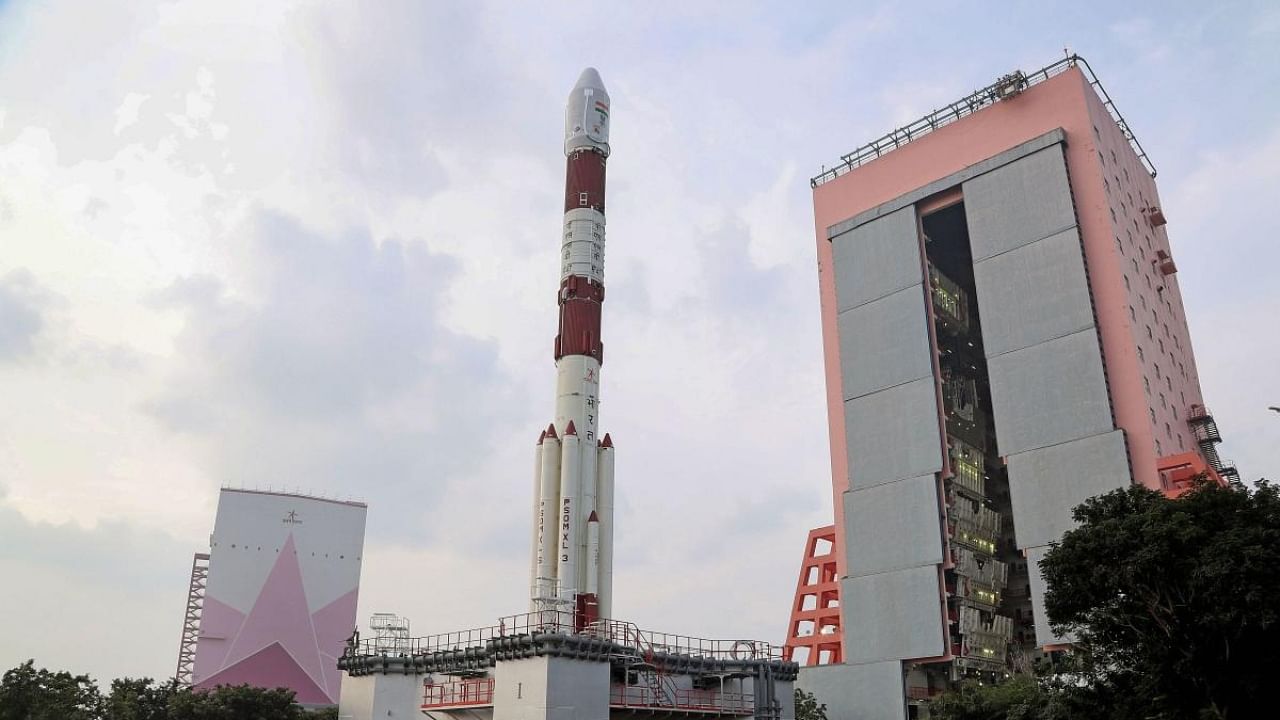
Within a span of six months, Indian Space Research Organisation is likely to send two deep-space probes to the Sun and the Moon in 2023, seeking to find out answers to some of the long standing puzzles on the two celestial bodies in the planetary system.
“The launch window for the Sun-bound Aditya-L1 mission is February 2023, but it is not a critical window. The Chandrayaan-3, on the other hand, is planned in June. The Moon-bound spacecraft is ready and we have made it more robust,” S Somnath, chairman, Indian Space Research Organisation said here on Thursday. The ISRO chairman was talking to the journalists on the sidelines of a conference.
The Chandrayaan-3 mission would replicate what the ill-fated Chandrayaan-2 sought to achieve. Launched in 2019, India’s second lunar mission failed as the lander crashed on the lunar surface due to a software glitch.
The legs of the new lunar lander have now been ruggedised to lower the chances of any accident while landing. Also, there is a new software to calculate the distance of the surface while landing and the instrumentation has been improved so that in case of a failure of one equipment, another can take over.
“Chandrayaan 3 is ready with us. The rover is there. The engineering is significantly different. We have made it more robust so that it does not have problems like last time,” he said.
Somnath said the space agency would undertake six unmanned missions including four 'abort missions' before the long awaited human spaceflight that was scheduled to lift-off from Sriharikota by 2024 end. The deadline, however, depends on the success of the trial missions.
The first 'abort mission' will take place in the first half of next year followed by a second 'abort mission' and an unmanned full flight. Subsequently, two more 'abort missions' and one more unmanned flight would be undertaken before ISRO is ready with its first human spaceflight.
A group of IAF officers have already been trained for India’s maiden manned mission to space.
The objective of each of the 'abort missions' would be to safely recover the crew module that would land in the sea once a mission is canceled mid-flight. The scientists will create scenarios that would require a mission to be aborted. All these missions are needed to ensure the safety of the human crew when the first Gaganyaan goes up.
Aditya-L1 is a unique mission in which a 400-kg class satellite carrying the payload will be placed in an orbit around the Sun in such a way that it can continuously view the star without any occultation or eclipses during which the Sun is hidden by other planetary bodies. The orbit would be located 1.5 million kms away from the Earth.
The Aditya-L1 mission witnessed several key changes in the scope of the mission, delaying the project. In the current form, the mission will help understand how solar magnetic storms are born in the million degree hot, outer atmosphere of the Sun. But even now, scientists are not sure if the February 2023 deadline can be met because of the complexities involved in the mission.
“Also it will explore processes that lead to changes in the Sun's radiation output in the near ultraviolet and x-rays which can influence the Earth's upper atmosphere and climate and monitor the properties of solar plasma wind and solar storms just before they impact the Earth's space environment and orbiting satellites,” Dibyendu Nandi, head, Center of Excellence in Space Sciences India at Indian Institute of Science, Education and Research Kolkata and one of the key scientists involved with the mission told DH.
